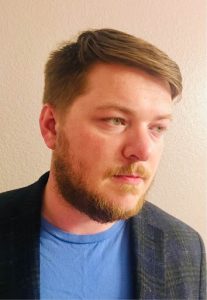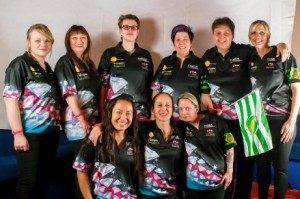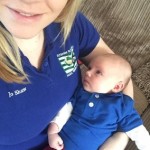Josh David is a recent graduate from the University of Scranton with a degree in Computer Science. He minored in Philosophy at college and headed The Philosophy Society, so feel free to strike up a philosophical discussion with him at any time!

He is no stranger to APL. In Scranton, he was introduced to APL during an internship with The Carlisle Group. From there, he continued learning and developing in APL and was one of the three grand prize winners in the 2016 APL problem solving competition. Throughout his college career he sporadically worked on other APL projects. He has done frequent pair programming with Stephen Mansour, who was conveniently teaching statistics at the same university! His interest is in Computer Science, and he has also done non-APL related software development at his University and professionally during another internship with MetLife.
He will primarily be a contractor for North American clients. Some of his time will also be spent with Dyalog’s Tools group, developing tools to make APL programming easier, more powerful, and current with new technologies.
One particular area he wants to tackle is creating more libraries and interfaces in APL. With the recent push towards git and source code in text files among the Dyalog APL community, he believes that now is a prime time to do this.


 Follow
Follow

 On June 30th 2018 she married Tom Fergus, Remy’s Dad, in a small ceremony at Trowbridge County Hall and became Jo Fergus. The wedding came as a bit of a surprise to friends and family who thought they were attending a birthday lunch but the sun shone and a fantastic day was had by all. Jo started to miss playing pool and in 2018 she went to the Wiltshire county pool trials and was invited back into the Wiltshire Ladies A county team. After a successful season, in which they didn’t lose a match, the team has qualified for National County Finals taking place at the beginning of March. Jo has also joined a team playing in her local pool league.
On June 30th 2018 she married Tom Fergus, Remy’s Dad, in a small ceremony at Trowbridge County Hall and became Jo Fergus. The wedding came as a bit of a surprise to friends and family who thought they were attending a birthday lunch but the sun shone and a fantastic day was had by all. Jo started to miss playing pool and in 2018 she went to the Wiltshire county pool trials and was invited back into the Wiltshire Ladies A county team. After a successful season, in which they didn’t lose a match, the team has qualified for National County Finals taking place at the beginning of March. Jo has also joined a team playing in her local pool league.



